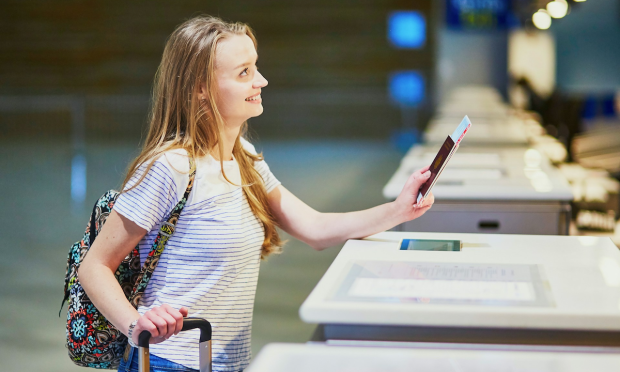
In an era marked by rapid technological advancements, the aviation industry continues to adapt, seeking ways to streamline processes and enhance passenger experiences.
Recent developments at various international airports underscore this trend, showcasing the evolution of airport technologies toward a more digital and connected future.
Dayton International Airport’s recent announcement of the FlyMyAirport digital platform, integrated into the airport’s official website, represents a significant step toward enhancing the traveler experience. From real-time flight updates to parking reservations and terminal maps, FlyMyAirport gives travelers tools to navigate the Ohio-based airport.
Additionally, the platform facilitates travelers’ search for flights, travel packages, hotels and rental vehicles directly through the airport website, simplifying the booking process and enhancing overall convenience.
“Choosing to fly from DAY is synonymous with ‘easy to and through’,” Gil Turner, director of aviation at Dayton International Airport, said in a statement, adding that FlyMyAirport can assist local travelers in planning “everyday trips as well as their dream vacations starting from Dayton instead of other airports.”
FlyMyAirport is powered by Kayak, a major player in the digital transformation of the travel industry. As PYMNTS recently reported, the travel booking company has launched two new features, including a chatbot for travel advice and flight discovery via screenshots. With Kayak’s latest tool, PriceCheck, users can now upload a screenshot of their flight itinerary directly to the app, which searches hundreds of sites for the most competitive prices.
Meanwhile, the collaboration between KLM Royal Dutch Airlines, Amsterdam Airport Schiphol and global identity technologies provider IDEMIA in exploring Digital Travel Credential (DTC) technology marks a pioneering initiative in bolstering border security and enhancing passenger facilitation.
Last month, the consortium concluded a month-long pilot program aimed at assessing the efficacy of DTC-1 — a digital copy of passport information stored on the passport chip — when integrated with facial recognition technology at border control checkpoints.
Passengers are able to input their passport information and a facial photo into a dedicated app prior to travel, enabling border control authorities to conduct an initial check before passengers arrive at Schiphol Airport.
“Upon arrival at Schiphol Airport, participants pass through a special DTC ‘Tap & Go’ border gate. Participants then hold their passports against the border gate. If there is a match between the DTC and the offered passport and no peculiarities have emerged from previous checks, the participants can cross the border,” a post on the Government of Netherlands website said.
The implementation of DTC-1 technology represents just one of the methods airports are employing to streamline border control procedures.
In the United States, the U.S. Customs and Border Protection (CBP) has developed the Mobile Passport Control (MPC) app, allowing travelers to submit their photo, customs declaration and passport information to facilitate expedited re-entry into the country at select airports. By utilizing this app, travelers gain access to dedicated lines reserved for MPC users, ensuring seamless passage through immigration checkpoints.
These developments reflect broader trends reshaping the airport experience, with a growing emphasis on digitalization, automation and connectivity. From mobile check-in to biometric authentication and travel apps, airports are leveraging technology to create more efficient and personalized experiences for passengers.
However, the adoption of such technologies also raises significant concerns regarding privacy and data security. This underscores the importance of implementing robust regulatory frameworks and safeguards to protect passenger information and ensure transparent data handling practices.
Ultimately, striking the right balance between convenience, privacy and data security concerns will be pivotal in shaping the future of air travel and driving widespread adoption of these technologies.